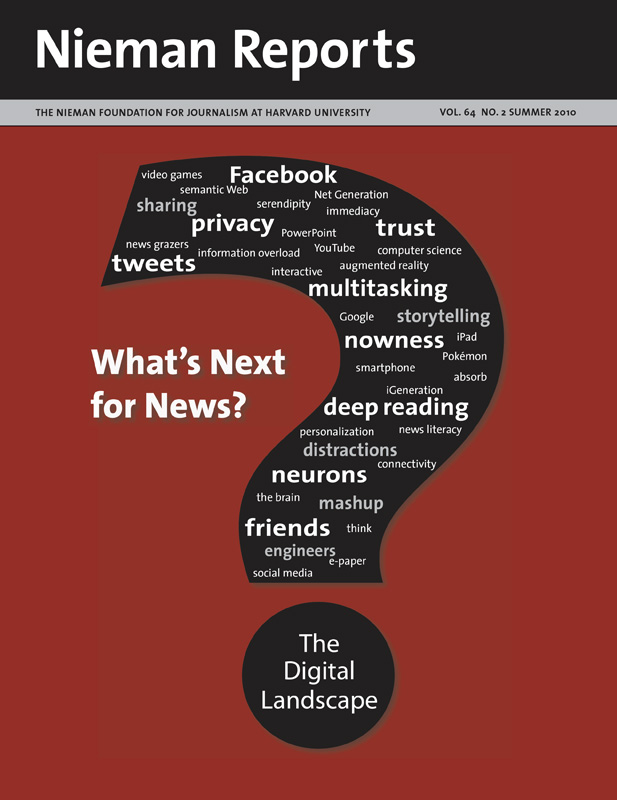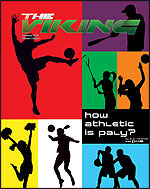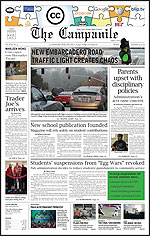In an age when many people, especially journalists, are worried about the future of the profession and of democracy, questions I’m asked on a regular basis include, “Why teach journalism since there are no jobs out there? Don’t you feel guilty misleading your students?”
Good questions, but in fact journalism is not dying, at least not in Palo Alto, where I teach journalism at the public high school. The media program at Palo Alto High School is the fastest growing program in the school with more than 500 students out of a student body of 1,900 electing to take journalism on one platform or another. In fact, more students than ever want to participate. And the way I see it, journalism is alive and well throughout the United States; it is just changing platforms from paper to digital, and the majority of writers are no longer professionals but citizen journalists.
Twenty-five years ago journalism in Palo Alto was very different. When I first came to the school, 19 students were in the program and our school paper was put together on a typewriter and pasted up on a pasteboard with hot wax. Through the years, as technology changed, I added Apple computers and Adobe software and the program grew. Between 1998 and 2005 as the numbers in my Advanced Journalism program exploded, I created four more programs and we hired four more teachers to handle the increased demand. Today we publish a two-section broadsheet every three weeks, and an 80-page feature magazine and an 80-page sports magazine every six weeks. (The publications are online at http://voice.paly.net.)
Our Web journalism program publishes daily, just as our television program broadcasts every day, and our video program teaches kids how to produce videos. In January the Palo Alto Board of Education approved a 24,000-square-foot two-story $11 million media center to house the program.
So why are all these kids electing to take journalism? What are we doing at Palo Alto High School to get students excited about learning to write when nationwide few students sign up for writing classes?
Here is the main reason: At Palo Alto High School, we respect the First Amendment and give students the full rights accorded them in the U.S. Constitution. That means they can write about issues of importance to them. That means we respect their opinions and showcase their work in a variety of platforms.
I can hear people saying that freedom alone would not account for such large numbers of students. We must be doing something else. It must be teacher dependent. Don’t be fooled by the simplicity of the answer; it is freedom. Sometimes it’s good to just remind ourselves that there were people who risked their lives and gave up their homes to come here seeking the freedom to pursue the American dream, which includes freedom of speech and freedom of religion.
Freedom of Expression
That drive for independence and freedom is alive and well in our teenagers today; if we enable it in our schools, students will respond. Yet far too often schools squelch students’ drive for independence and do what they can to control them. We teach to the test while failing to pass on to them skills relevant to the times and world they live in. Most schools do not allow their students access to an uncensored Web; this is a trait we usually ascribe to China and rarely acknowledge about ourselves. Schools even subscribe to netTrekker and Gaggle, services that sanitize the Web. Cell phones are confiscated, and Facebook and other social platforms get blocked. Computers are used as word processors.
Certainly this isn’t the case in every school or classroom. There are administrators and teachers who understand the power of the Web as a teaching tool and use the Internet as a source of information and the “cloud” to store documents. There are those who don’t try to censor the Web for students, are familiar with Google Apps for Education, and encourage kids to use Flip cameras to make videos. They are the exception, however, and not the rule.
RELATED ARTICLES
“E-Textbooks to iPads: Do Teenagers Use Them?”
– Esther Wojcicki
“The Future of News: What Ninth-Grade Students Think”The two main drives in teenagers’ lives are for independence and acceptance; our approach to journalism supports these drives through favoring freedom of expression and showcasing student work on a variety of public platforms. Yet in 43 of the 50 states students do not have legal protection to guarantee freedom of expression in schools. The Hazelwood v. Kulhmeier Supreme Court decision in 1988 gave administrators and teachers the right to “prior review” of student work, and that often leads to kids not being able to write about issues of importance to them. The states with laws that protect student free speech are California, Arkansas, Colorado, Iowa, Kansas, Massachusetts and Oregon. In other states, anything the principal deems inappropriate is removed and entire stories can be censored. Given these circumstances, is it a surprise that many students are not interested in taking journalism?
The Hazelwood decision is now two decades old. An entire generation has lived its entire academic life—and is now moving into the professional ranks—under Hazelwood’s influence. Far too many of our future journalists, citizens and leaders unquestioningly accept that school administrators—government officials—should have the authority to dictate what they read, write and talk about. What this means for the future of press freedom in America remains unknown …
Journalism as Education
How can schools afford these programs when budgets are falling? All the print publications at Palo Alto High School are self-supporting through advertising from the community. The kids learn what it means to sell advertising, create ads, service an ad contract, and balance the budget. It brings the community into the school and the school into the community. Being involved in the advertising program teaches kids important skills about business.
The easiest way to pass on the skills and purpose of journalism is to have an online program, which is, after all, the future. Our digital journalism program is free—at least in the tools and supplies we need to run it. It costs the school nothing; in fact, our Web site makes money using Google Ad Sense and it provides a dynamic platform for showcasing student work. Digital journalism is the future so kids are learning how to publish on the Web using Blogger or WordPress. If they want to publish books, they can use print on demand services like Lulu, Blurb or Qoop.
Today’s journalism curriculum can revolutionize English education by making the writing curriculum relevant and exciting. In the process, it can also train an entire generation of citizens—many of whom will be doing what journalists do today—to be responsible contributing members of the digital society. I see what we do in our journalism program as being a good way to teach all students important thinking and writing skills along with journalism 2.0 skills, which includes knowing how to use Creative Commons (CC) licenses to share, remix and spread creative works.
Creative Commons is a nonprofit organization that offers licenses allowing creators to specify which rights they reserve and which rights they waive for the benefit of other creators. Students in Palo Alto use a license each time they upload a story to the Web site; this means they license each story individually or not at all, and they are the ones who make that decision.
Critical thinking skills are essential for work in the 21st century, and journalism is all about picking out what is important and figuring out how to write a lede. It’s also a way to learn civic engagement skills; practicing journalism gets students involved in local, state and national issues. (Assignment: read two online papers daily and two magazines per week.) It’s about teaching writing skills and motivating kids to write news, features, reviews, opinion. It’s about learning grammar skills since writing can be an effective way to motivate kids to use grammar well. (With their byline there, they are motivated to make sure there are no errors.) It’s a way to teach Web skills—how to search, blog, practice Web ethics, and share. Journalism also teaches kids how to collaborate both online and offline and how to work effectively with their peers both as leaders and as participants. These are skills employers are seeking in prospective employees.
All students need these skills, not just journalism students. I am so passionate about this notion that I piloted teaching journalism-Web skills in my ninth-grade English classes this past school year. The kids loved it. They said it was much more exciting to write opinion pieces about issues they cared about than the typical five-paragraph response-to-literature essay. They liked the curriculum so much that the majority of them are signing up for journalism next fall.
The students’ response delighted me so much that I decided to write a grant proposal for a 12-week media curriculum that can be used either as a 12-week unit or individual modules to be spread over the year for ninth- through 12th-grade English or social studies. It’s aimed at teachers who are interested in getting their students excited about writing and engaged as members of a digital generation. In May I was awarded a Knight Foundation grant to support the development of this journalism curriculum, an example of project-based learning that will be freely available under a CC license. This approach to classroom instruction is commonly used in countries such as Finland, Japan and Canada, in which students score the highest on the Program for International Student Assessment.
America is a nation that thrives on independence and on the entrepreneurial spirit. Yet our schools’ curricula do just the opposite by driving teachers to teach to the test and kids to be effective multiple choice test takers. Let’s offer our kids at least one opportunity in school each day in which they truly act with an independence of mind and with freedom to speak to the issues in their lives. That course should be journalism.
Esther Wojcicki directs the journalism program at Palo Alto High School and is chairwoman of the nonprofit Creative Commons. She is a recipient of a John S. and James L. Knight Foundation grant in support of her work developing a project-based journalism curriculum for English or social studies classes.





